Things to do in Cape Winelands
The Cape Winelands are vast and travellers should plan their visits properly. The main wine route areas are Stellenbosch, Paarl and Wellington, and Franschhoek. Somerset West is also a great wine-making region. Visitors can't go wrong with any of these options, which all feature quaint old towns as well as beautiful scenery and famously good wines.
In Stellenbosch, favourite estates include Spier, Meerlust, Simonsig, Waterford, Rust en Vrede (1694), and Rustenberg (1682). Paarl and Wellington highlights include Fairview, Laborie, Doolhof, and Diemersfontein. In Franschhoek, La Motte is a treat, while in Somerset West, Vergelegen and Morgenster are genuinely special.
Cape Town's City Sightseeing tourist buses offer a hop-on, hop-off wine-tasting route, though serious wine enthusiasts should consider purchasing a guide prior to exploring the winelands. They could prove immensely useful, with many documenting all the wines of the South African industry and providing some background and maps for each estate.
Most of the famous estates are open on weekends, but some of the smaller ones are only open during the week. For this reason, it is best to plan a wine route for a week day if possible.
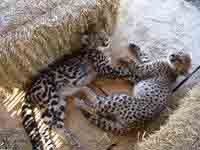
Spier Wine Estate
Spier is one of South Africa's most famous and most popular wine estates. Internationally renowned as cultural resort, it offers luxurious accommodation, conference facilities, sho…
Spier Wine Estate
Spier is one of South Africa's most famous and most popular wine estates. Internationally renowned as cultural resort, it offers luxurious accommodation, conference facilities, shopping, fine dining, and a variety of recreational activities, including golf, horse riding, picnics, and a cheetah park. Travellers can visit Eagle Encounters, where they can get up close to some amazing birds of prey. An outdoor amphitheatre traditionally presents a variety of music, theatre, and dance during the Spier Summer Arts Season, seeking to promote, showcase and develop emerging South African talent. Situated in the heart of the Stellenbosch winelands region, Spier also boasts world-class wines in what is the oldest working cellar in South Africa.
Website www.spier.co.za
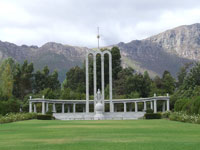
Huguenot Monument and Museum
The historic Huguenot Monument was erected in 1945 and is a major tourist attraction in the Franschhoek Valley. It commemorates and honours the French Huguenots who arrived in Sout…
Huguenot Monument and Museum
The historic Huguenot Monument was erected in 1945 and is a major tourist attraction in the Franschhoek Valley. It commemorates and honours the French Huguenots who arrived in South Africa in 1688 after fleeing brutal persecution in their home country. The nearby museum documents the history of the settlers, from their flight from France to their arrival and successful establishment of the Franschhoek wine region in the Cape of Good Hope. The little museum contains a variety of Bibles, documents, furniture, utensils, and artefacts, providing insight into the life of the Huguenots in the Cape. The memorial is graceful and the calm of the place is moving, considering the violent history of the fleeing Huguenots.
Website www.museum.co.za
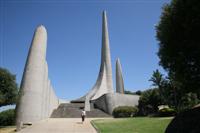
Afrikaans Monument and Museum
The Afrikaans Language Museum pays tribute to a unique language that is little more than 300 years old. Created from the melting pot of languages in the Cape, Afrikaans developed f…
Afrikaans Monument and Museum
The Afrikaans Language Museum pays tribute to a unique language that is little more than 300 years old. Created from the melting pot of languages in the Cape, Afrikaans developed from the need of Dutch settlers, French Huguenots, slaves from Malaysia, Indonesia, Madagascar, and West Africa, and the local Khoi people to communicate. The struggle to gain recognition of Afrikaans as an official language was carried out from Paarl, and the museum commemorates the people that played an important role in the process. The institution also explores the language in its diversity.
Website www.taalmuseum.co.za
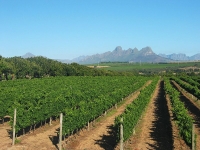
Stellenbosch
At the heart of the wine industry is the pretty town of Stellenbosch. Along with being the second oldest town in South Africa, it is regarded as the country's wine capital, with ov…
Stellenbosch
At the heart of the wine industry is the pretty town of Stellenbosch. Along with being the second oldest town in South Africa, it is regarded as the country's wine capital, with over 110 cellars in the area. The Stellenbosch vineyards were established by the Dutch governor of the Cape, Simon van der Stel. He arrived in 1679 and noted that the combination of rich soil and ideal climate were perfect for viticulture. In 1971 the first wine route in South Africa was opened, and today the Stellenbosch wine route is perhaps the best known and finest that the country has to offer. It produces award-winning wines from estates such as Morgenhof, Kanonkop, Warwick, and Zewenwacht.
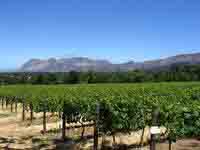
Constantia
Constantia is the origin of wine production in South Africa, and one of Cape Town's most exclusive suburbs. The Constantia wine route is the oldest yet smallest wine route in the C…
Constantia
Constantia is the origin of wine production in South Africa, and one of Cape Town's most exclusive suburbs. The Constantia wine route is the oldest yet smallest wine route in the Cape, consisting of just 10 wine farms that concentrate on producing a few wines of international quality and repute. The historic Cape Dutch homestead at Groot Constantia is one of the oldest wine estates in South Africa, home to the first governor of the Cape, Simon van der Stel, and the valley's most famous wine farm. The house itself is furnished with items from the period, while an adjacent wine museum exhibits drinking and storage vessels dating from 500 BC to the 19th century. There are some great restaurants and tasting rooms at Groot Constantia.
Website www.constantiawineroute.com
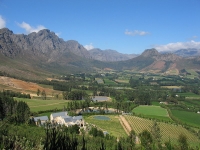
Franschhoek
Fleeing religious persecution in France in the 1700s, more than 200 French Huguenots arrived in the Cape and were settled in the valley that soon became known as Franschhoek (Frenc…
Franschhoek
Fleeing religious persecution in France in the 1700s, more than 200 French Huguenots arrived in the Cape and were settled in the valley that soon became known as Franschhoek (French Corner), which is today situated in the heart of the Cape Winelands region. Many of the settlers were experienced wine producers and they soon recognised the potential of the region for wine and fruit production, establishing wine estates throughout the spectacular Franschhoek Valley in surroundings of magnificent scenery and towering mountains. Today the town is famous not only for its splendid wines and beautiful vistas, but also as the gourmet capital of South Africa, boasting the highest number of award-winning eateries in the country.
Website www.franschhoek.org.za
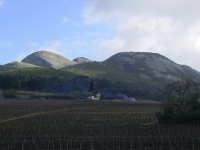
Paarl
Paarl is built in the picturesque Berg River Valley, which lies at the foot of the second-largest granite outcrop in the world. It is the biggest town in the Cape Winelands and the…
Paarl
Paarl is built in the picturesque Berg River Valley, which lies at the foot of the second-largest granite outcrop in the world. It is the biggest town in the Cape Winelands and the third oldest European settlement in South Africa. Paarl features some of the most superb examples of Cape Dutch, Victorian, Edwardian, and Art Deco architecture in the country. Its rich history includes Drakenstein Prison, where the iconic anti-apartheid activist and former president of South Africa, Nelson Mandela, spent his last years in captivity. The Language Monument overlooks the town from the slopes of the Paarl Mountain, and symbolises the birth of the Afrikaans language. Along with its historical background, Paarl is also known for its award-winning wines, particularly its reds, which can be sampled along one of the world's first 'Red Routes'.



